
The necropolis of Draʻ Abu el-Naga' is located on the West Bank of the Nile at Thebes, Egypt, just by the entrance of the dry bay that leads up to Deir el-Bahari and north of the necropolis of el-Assasif. The necropolis is located near the Valley of the Kings.

The Theban Necropolis is a necropolis on the west bank of the Nile, opposite Thebes (Luxor) in Upper Egypt. It was used for ritual burials for much of the Pharaonic period, especially during the New Kingdom.

The Theban Tomb TT16 is located in Dra' Abu el-Naga', part of the Theban Necropolis, on the west bank of the Nile, opposite to Luxor. It is the burial place of the ancient Egyptian Panehsy, who was Prophet of Amenhotep (I) of the Forecourt, during the reign of Ramesses II.
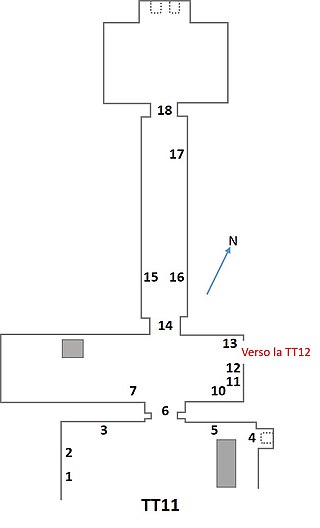
The Theban Tomb TT11 is located in Dra' Abu el-Naga', part of the Theban Necropolis, on the west bank of the Nile, opposite to Luxor. It is the burial place of the ancient Egyptian Djehuty, who was Overseer of Treasury and of Works, during the 18th Dynasty reign of Hatshepsut.
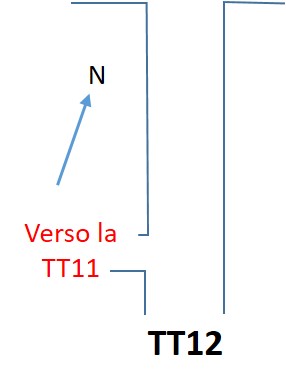
The Theban tomb TT12 is located in Dra' Abu el-Naga', part of the Theban Necropolis, on the west bank of the Nile, opposite to Luxor. It is the burial place of the ancient Egyptian Hery, who was Overseer of the Granary of the King's Mother Ahhotep, during the reigns of Seqenenre Tao II to Amenhotep I.

The Theban Tomb TT13 is located in Dra' Abu el-Naga', part of the Theban Necropolis, on the west bank of the Nile, opposite to Luxor. It is the burial place of the ancient Egyptian Shuroy, who was Head of Brazier-bearers of Amun.

The Theban Tomb TT18 is located in Dra' Abu el-Naga', part of the Theban Necropolis, on the west bank of the Nile, opposite to Luxor. It is the burial place of the ancient Egyptian Baki, who was Chief Weigher of the Gold of Amun during the early Eighteenth Dynasty.
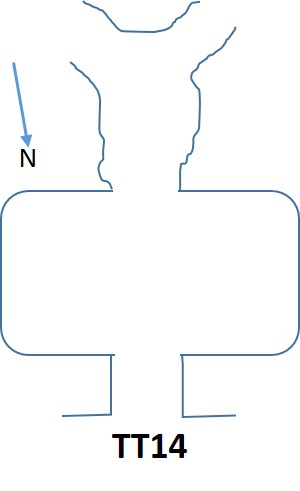
The Theban Tomb TT14 is located in Dra' Abu el-Naga'. It forms part of the Theban Necropolis, situated on the west bank of the Nile opposite Luxor. The tomb is the burial place of the ancient Egyptian Huy, who was a wab-priest of Amenhotep, the favorite of Amun.
Neferhotep was an ancient Egyptian official with the title scribe of the great enclosure. He lived during the 13th Dynasty, around 1750 BC. His tomb was found in 1860 by Auguste Mariette in Dra Abu el-Naga and contained an important range of objects, most notably of which was the Papyrus Boulaq 18, which is an account of life in the Theban palace. The papyrus had already been published, but the finds in Neferhotep's tomb have only recently been fully published. The tomb contained the rishi coffin of Neferhotep, which was most likely badly decayed when Mariette found it. So it is only known from Mariette's description. Other finds in the tomb are a walking stick, a head rest, a faïence hippopotamus, wooden pieces of the Hounds and Jackals game, a mace, writing implements, a wooden tray for a mirror, two calcite vessels, a magical wand and a double scarab.

The Theban Tomb TT17 is located in Dra Abu el-Naga, part of the Theban Necropolis, on the west bank of the Nile, opposite to Luxor. It is the burial place of the ancient Egyptian noble named Nebamun, who lived during the 18th Dynasty, during the reign of Amenhotep II. Nebamun was a scribe and a physician to the King.

The Theban Tomb TT19 is located in Dra' Abu el-Naga', part of the Theban Necropolis, on the west bank of the Nile, opposite to Luxor. It is the burial place of the ancient Egyptian Amenmose, who was the high priest of Amenhotep of the Forecourt during the early Nineteenth Dynasty.

The Theban Tomb TT35 is located in Dra Abu el-Naga, part of the Theban Necropolis, on the west bank of the Nile, opposite to Luxor. It is the burial place of the ancient Egyptian noble named Bakenkhons I, who lived during the 19th Dynasty, during the reign of Ramesses II. Bakenkhons was a High Priest of Amun.

The Theban Tomb TT156 is located in Dra' Abu el-Naga', part of the Theban Necropolis, on the west bank of the Nile, opposite to Luxor. It is the burial place of the ancient Egyptian Pennesuttawy, who was a troop commander and superintendent of the Southern Desert Lands during the reign of Ramesses II in the Nineteenth Dynasty.
The Theban Tomb TT168 is located in Dra' Abu el-Naga'. It forms part of the Theban Necropolis, situated on the west bank of the Nile opposite Luxor. The tomb is the burial place of the ancient Egyptian Any, who was a God's Father of Amun and a Chosen lector of the Lord of the Gods during the reign of Ramesses II in the Nineteenth Dynasty.
The Theban Tomb TT169 is located in Dra' Abu el-Naga', part of the Theban Necropolis, on the west bank of the Nile, opposite to Luxor. It is the burial place of the ancient Egyptian Senna, who was the head of the goldworkers of Amun during the reign of Amenhotep II in the Eighteenth Dynasty.
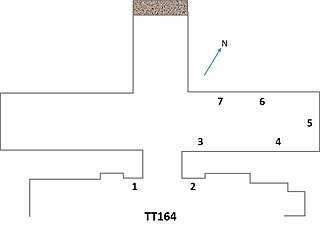
The Theban Tomb TT164 is located in Dra' Abu el-Naga', part of the Theban Necropolis, on the west bank of the Nile, opposite to Luxor.

The Theban Tomb TT282 is located in Dra' Abu el-Naga', part of the Theban Necropolis, on the west bank of the Nile, opposite to Luxor. It is the burial place of the ancient Egyptian Nakhtmin, also called Nakht, who lived during the reign of Ramesses II of the 19th Dynasty.
Georges Foucart was a French historian and Egyptologist. He was the son of archaeologist Paul Foucart (1836–1926), a professor of ancient Greek studies at the Collège de France.

Tomb A.6 is the modern number given to a now lost Theban tomb in Dra' Abu el-Naga'. The burial dates to the ancient Egyptian 18th Dynasty and belonged to the overseer of the marshland dwellers Dhjehutinefer, who is also called Seshu. The place was visited by the expedition of Karl Richard Lepsius, who copied the tomb owner's title overseer of the marshland dwellers of the lord of the two lands, but not the name. It seems that the tomb was then already heavily destroyed. Before 1906 the French Egyptologist Henri Gauthier visited A.6 and described the few remains of the decoration and published a short note. Gauthier recorded some further titles of Dhjehutinefer, such as scribe and counter of cattle and fowl of the temple of Amun. A fragment belonging to the tomb is a wall painting that is today in the Metropolitan Museum in New York. On the fragment in New York also mentioned the wife of Djehutinefer, a woman called Benbu. Several funerary cones belonging to the tomb are known. They provide the name of Djehutynefer's father who was the scribe Mesu.
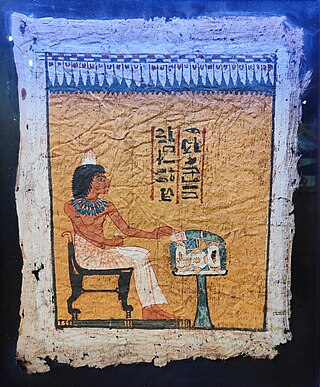
Sennefer was an Ancient Egyptian official with the title Servant in the Place of Truth at the end of the 18th Dynasty. He is mainly known due to his unlooted burial found in 1928 by excavations under Bernard Bruyère at Deir el-Medina. The burial chamber of Sennefer was found within the tomb of the servant at the place of truth Hormes. The small chamber contained the inscribed coffins of Sennefer and his wife Nefertiti. Both were found wrapped in linen. Sennefer was also adorned with a mummy mask. He had a heart scarab and was adorned with a pectoral. On his coffin was placed a painted piece of cloth, showing Sennefer before an offering table. Furthermore, the burial contained different types of furniture, including a bed, a box, a head rest and several pottery as well as stone vessels. The burial of a child in an undecorated box was found, too. Two shabti figures are datable by style to the end of the 18th Dynasty.



















